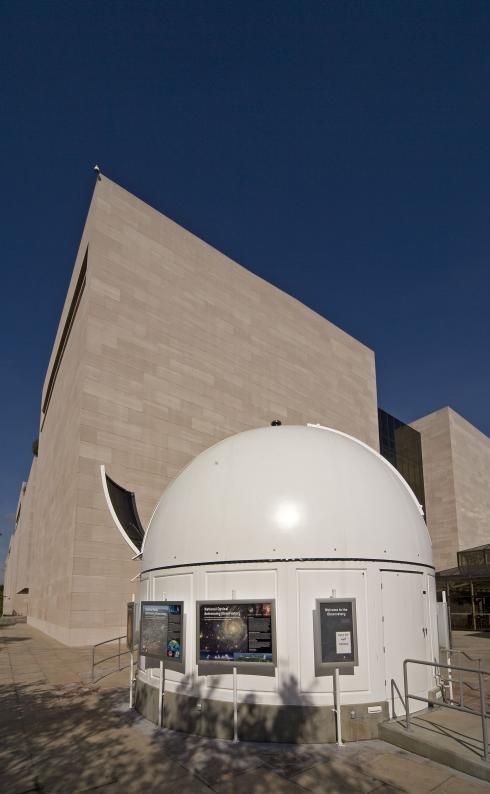
WHAT: Opening of the Public Observatory and press preview of “Journey to the Stars”
WHEN: Wednesday, Sept. 30
8:30 a.m.: Breakfast
9:15 a.m.: Ribbon-cutting ceremony
10:15 a.m.: Press preview of “Journey to the Stars” planetarium show
WHERE: Smithsonian’s National Air and Space Museum, Seventh Street and Independence Avenue S.W.
WHO: Wayne Clough, Secretary, Smithsonian Institution
John R. Dailey, director, National Air and Space Museum
Roger Brissenden, associate director, Smithsonian Astrophysical Observatory
An astronomical telescope in a 22-foot dome will be available during museum hours every Tuesday through Sunday, weather permitting, to view the sun, moon and planets from the east terrace of the National Air and Space Museum starting Wednesday, Sept. 30. The telescope, built with the cooperation of Harvard and the Smithsonian Astrophysical Observatory, with major support from the National Science Foundation, will be the museum’s focal point for the International Year of Astronomy throughout the rest of 2009 and well into 2010.
Guests at the opening ceremony will be able to look through the telescope (weather permitting). The curator of the program, David DeVorkin, as well as the volunteers and education specialists who run the observatory, will be available for interviews.
At 10 a.m., there will be a press screening of the new digital-dome planetarium show “Journey to the Stars,” developed by the American Museum of Natural History in New York with the cooperation of NASA and more than 40 leading scientists in the world, including experts from the National Air and Space Museum. The show, which takes viewers on an intergalactic journey through time and space to explore the life cycles of the stars, will open to the public Oct. 2 at the museum’s Einstein Planetarium.
Interested media must RSVP to larai@si.edu or mullenb@si.edu
For planetarium inquiries, please contact Holly Williamson at 202-633-6071 or hwilliamson@si.edu
In the stellar nursery within the Orion Nebula, young stars are forming before our eyes from a giant cloud of interstellar gas and dust much as the Sun did almost five billion years ago.
Image from the "Journey to the Stars" planetarium show which takes viewers on an intergalactic journey through time and space to explore the life cycles of the stars,. It opens to the public Oct. 2 at the museum’s Einstein Planetarium.
PLEASE NOTE: These images are supplied free solely for one-time use by print, broadcast, and online media for publicity purposes related to Journey to the Stars. No other use of these images is permitted without express written permission.